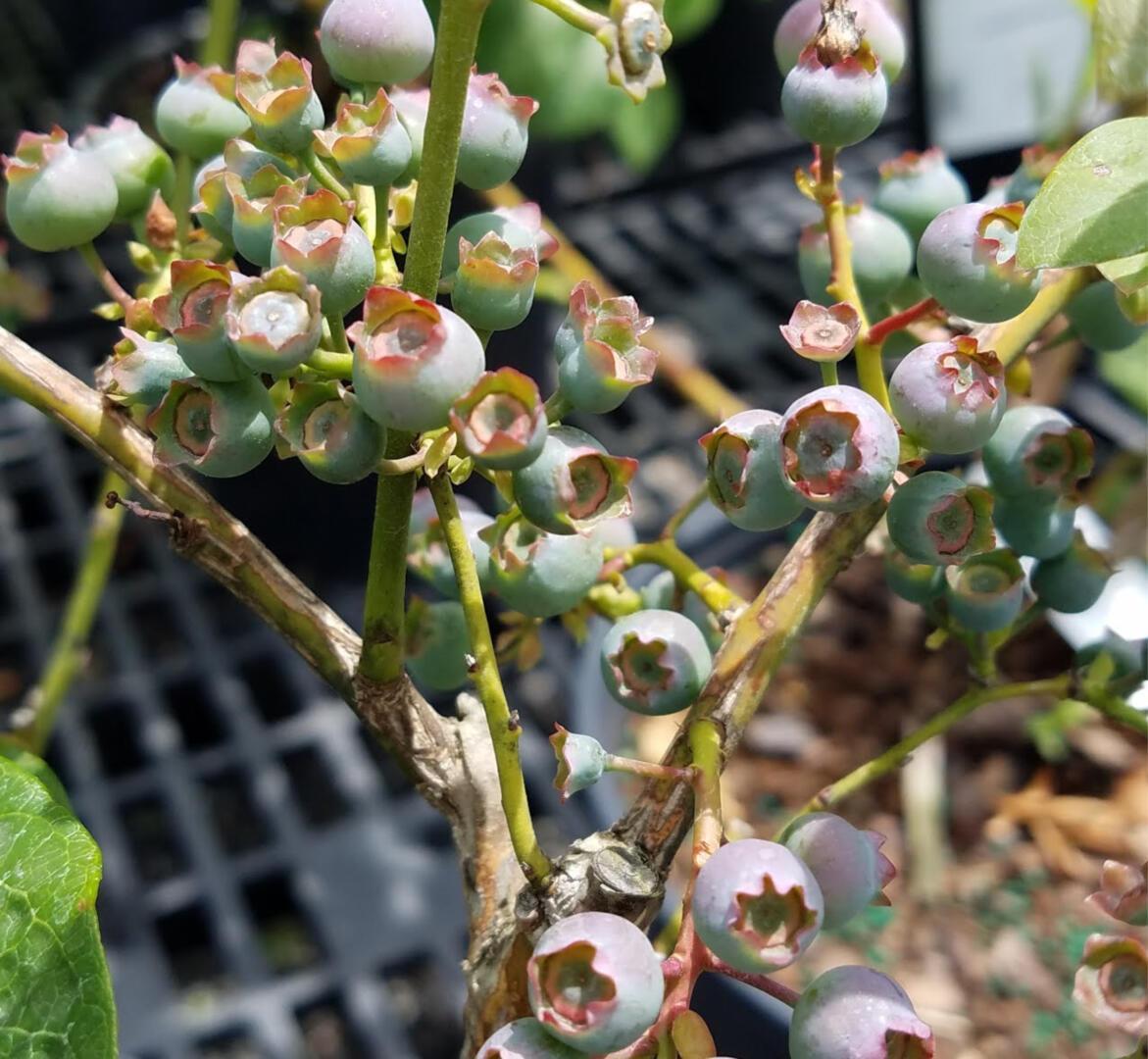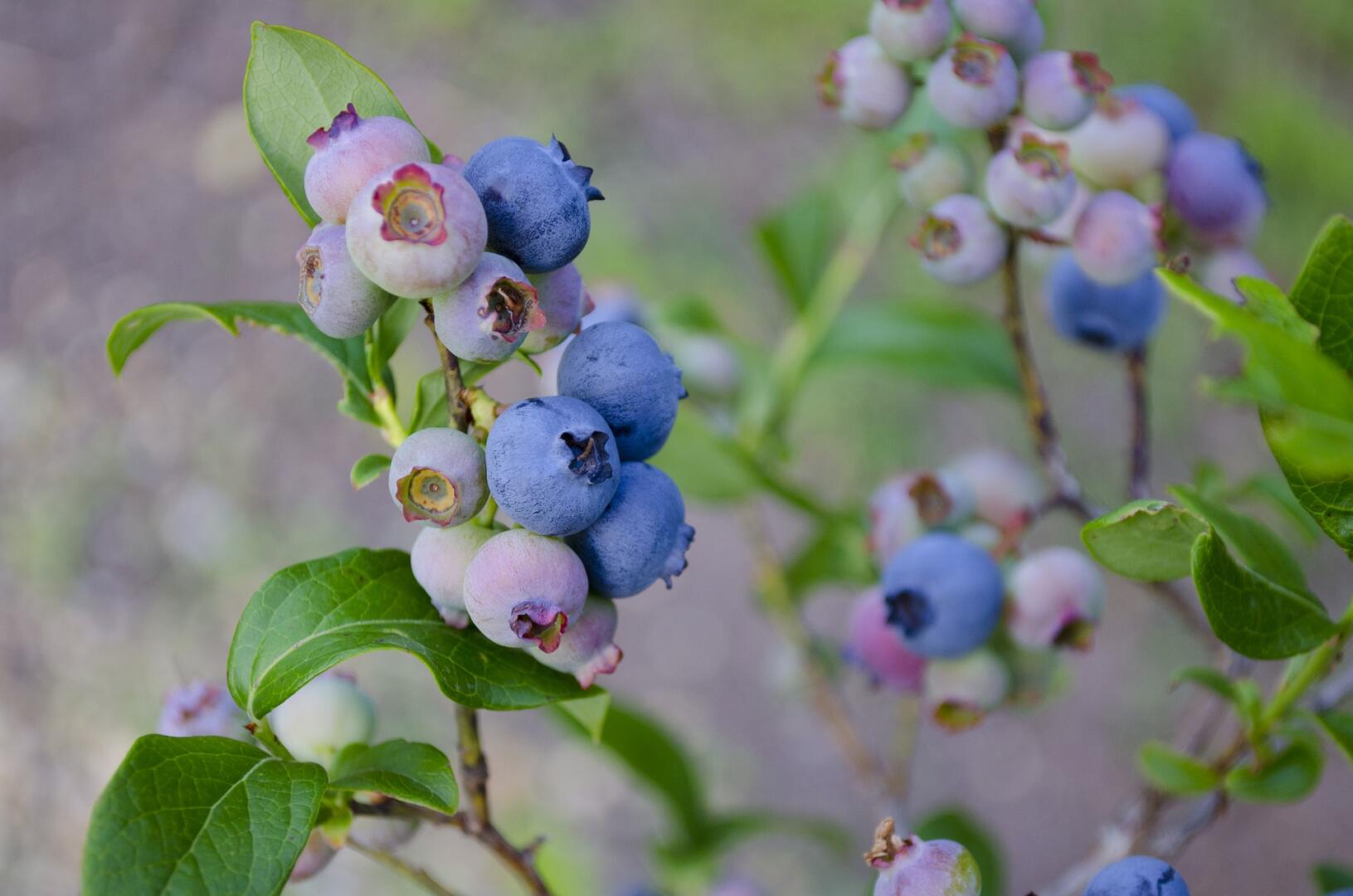Blueberries…the SUPER FOOD!
- Packed with antioxidants to keep your brain sharp.
- Good for the heart and blood vessels.
- Can lower bad cholesterol levels.
- Low in calories.
- Packed with vitamin C.
Did you know that North America produces 90% of the world’s blueberries?
When Planting Edibles, Always Start with a Plan:
Step 1: Comprise a wish list of plants.
Step 2: Experiment – Try something new!
Step 3: Know your land and location – Sunlight, space, and soil conditions.
Step 4: Growing methods – Raised beds, traditional rows, or containers?
Step 5: Choose your fruit – Start with trees, then berries and vegetables.
There is nothing more scrumptious than eating berries harvested from your own crop, and your success begins with the planting site and method you use.
When you purchase your plants from Herbein’s Garden Center, it should already be acclimated to our temperatures. If, however, you mail-order a plant, be sure to place them in a sheltered, shady area and gradually increase its time outdoors by 1-2 hours a day. After about 7 days, your plants should be ready to transplant into the ground.
BEFORE planting, consider these 3 things when planning your home orchard:
- Cross-pollination
- Sun and soil
- Space for future plants
Cross-pollination is necessary for blueberries and should consist of a different variety of blueberry plant. If there is not another variety, it will not bear fruit or grow properly.
Plant in full sun (at least 6-8 hours) and well-draining fertile soil. If you have heavy soil, add amendments such as manure or peat moss (up to 1/3 concentration) into your pile of topsoil.
Think ahead to the possibility of expanding your orchard in the future and have the space picked out ahead.
Check your soils pH before you dig. You can purchase a Penn State Soil Test Kit from us or a meter for a quick result. Blueberries prefer a soil pH between 4.5–5.5. Do NOT plant in soils that are extremely heavy.
Use Espoma Organic Garden Lime if the soil’s pH is too low, or Espoma Organic Soil Acidifier if the soil’s pH is too high.
As you prepare your planting site, remember that high bush blueberries should be planted 3’ apart and low bush at 2-4’ with 6-8’ between each row.
Preparing Your Soil
- Roots will grow faster if they’re spread out. Dig your hole deep and wide enough so the root system has enough room to expand. If the soil needs loosened up, mix dehydrated cow manure, peat moss or compost (up to 1/3 concentration) into the pile of soil you dig from the hole. Coco-Coir also works well if mixed into the top 2” of existing soil.
Adding organic matter will improve just about any type of soil condition by helping retain moisture and nutrients and break apart clay soils so that water can penetrate through and roots can spread.
Planting Tips
- Avoid planting your new berry plant too deep. The crown should be right at soil level and the roots just under the surface. Plant them at the same depth they are in the pot.
- Fill the hole with moist topsoil (amended if necessary), then tamp down with your hands to remove air pockets.
- Water the plant (blueberries have a shallow root system, so it is vital to water thoroughly during summer and keep soil acidic.
- Do not fertilize until AFTER the first leaves reach full size. You can then fertilize every 6 weeks until mid-summer. For older plants, apply fertilizer when the new growth begins in the spring.
- Blueberries produce in the 3rd season, so no need to prune until then.
Container Growing
Plant in your container with potting soil to 3” below the rim after gently loosening the root system. Fill the container with more soil and water lightly. Check the soil with your finger, if it feels dry, it’s time to water.
Fertilizers we recommend for use with blueberry plants:
Espoma Organic Berry-tone
Espoma Organic Holly-tone
Pests & Disease Control
Every plant has the potential for insect and disease damage. Big factors like location and weather will play a role in which issues your plants will encounter. Practicing proper maintenance on your fruit & berry plants such as watering, pruning, spraying, weeding, and cleanup will help keep most issues at bay.
Below is a list of pests that have been known to make an appearance on blueberry plants.
Aphids Sawfly
Blueberry Maggot/Fruit Fly Scale
Japanese Beetle Spittlebugs
Leafroller Stem Borer
Lygus Bugs Thrips
Mites Weevils
Below is a list of diseases known to infect blueberry plants.
Anthracnose Gray Mold
Botrytis Blight Powdery Mildew
Brown Rot Red Leaf Gall
Grab our brochure “Pest & Disease Control for Edibles” for more in-depth info.
Pruning Blueberry Plants
Pruning is a critical part of plant care and doesn’t have to be as overwhelming as most gardeners think.
- Blueberries should be pruned during winter while the bushes are dormant.
- In young plants (1 – 3 years old), typically no pruning is needed in the 1st year except to remove fruit buds shortly after planting. Pruning in the 2nd year should be heavy to stimulate strong new growth on selected canes. Don’t allow plants younger than 3 years old to bear more than a cluster or two of fruit or the productive period will be delayed.
- Plants over 3 – 4 years old should have their low-spreading branches and oldest, weakest canes removed. Cut back the tallest shoots to keep them from growing too tall. This will allow the more upright canes to bear the next crop. On the remaining canes, thin out the shorter, thinner shoots but leave enough of the thick shoots to bear the crop and make new growth. It’s better to prune too lightly than too heavily. As the plant gets older, it can carry the heavier woody stems due to its larger root system.
Spraying Blueberry Plants
Natural Control
- Serenade® Garden Disease Control for anthracnose, botrytis blight, powdery mildew and more.
What to Spray – At the First Sign of:
- Bonide® Captain Jack’s™ Deadbug Brew for fruitfly, thrips, leafrollers, and more.
- Bonide® Citrus, Fruit & Nut Orchard Spray for aphids, mites, blight, thrips, powdery mildew, spittlebugs and more.
- Bonide® Borer-Miner Killer for aphids, mites, lygus bugs, spittlebugs, weevils, Japanese beetles and more.
- Bonide® Thuricide® Bacilus Thuringiensis (BT) for omnivorus leafrollers.
- GardenTech® Sevin Concentrate Bug Killer for aphids, blueberry maggots, Japanese beetles, mites, weevils, leafrollers and more.
- Bayer Advanced™ Complete Insect Killer for aphids, mites, leafrollers, blueberry maggots, Japanese beetles, spittlebugs and more.
Bud Swell (or when buds have loose scales) Bonide® Captan Fruit & Ornamental for botrytis gray mold or berry rot and mummy berry.
Bud Break (green tip – DO NOT apply after early bloom) Bonide® Fung-onil for mummy berry and anthracnose.
Watering
Unless you typically need to water your plants for “normal” plant growth, you probably won’t need to water after the first growing season. However, don’t forget to water directly after planting at your site.
Harvesting
When to Harvest
Are you ready for your first crop of delicious blueberries? Here are a few things to keep in mind so you can harvest the best crop.
- You can expect your first crop in the 2nd The berry should be blue or pink in color depending on the variety you have planted. The berries will need about 7-10 days to fully develop, after which, for easy harvesting you can put your container under the berries and gently shake the branch or run your hand over the berries and the ripe berries will fall off. During the ripening season, check your plants daily.
- Blueberries will keep up to a week in the refrigerator. Put any remaining berries that you don’t use right away on cookie sheets in a single layer and freeze until firm and then put them in freezer bags to enjoy in recipes later.







